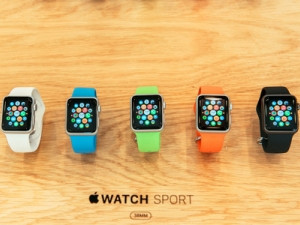
[PICTUE-RIGHT]The smartwatch market will grow to $21bn by 2021, boosted by basic hybrid and analogue watches, which will account for nearly 40% of this amount.
The is according to a Juniper research titled, Smartwatches: Trends, Vendor Strategies and Forecasts 2017-2021, which found that while basic smartwatches account for around 30% of the current market value, this share will grow to almost 40% within the next five years.
The report notes, while the number of high-end smartwatches is faltering, 'smart analogue' or hybrid watches remain largely unaffected by the market slowdown. These watches have traditional watch faces but offer some connected functions (like tracking steps or enabling near field communication payments), and will grow at twice the rate of multifunctional watches.
Research author James Moar says: "Now that the initial smartwatch buzz is over, a longer product lifecycle and sluggish adoption are responsible for the slowing market, as users do not regularly upgrade."
Multifunctional smartwatches, he adds, are the most visible smartwatch category overall, but now that initial interest has waned, the segment is consolidating. Motorola and Huawei have both withdrawn for the present, while Pebble and Vector have been acquired. The sector is now primarily the preserve of Apple, Samsung and Fitbit, together with traditional watchmakers like Fossil and TAG Heuer.
The report further revealed that customisable watch faces dominate smartwatch app downloads, implying that Android will take most of the category's software revenue.
According to a report by Business Insider Intelligence, demand for smartwatches has cooled as consumers wait for better functionality.
"But early demand suggests the market could take off when functionality improves. The future of the smartwatch market remains somewhat unclear; however, there is profound opportunity for businesses and developers to begin exploring the nascent smartwatch market. This will give them a head start against competitors," says the report.
According to research firm IDC, total global smartwatch volumes reached 2.7 million units shipped in 3Q 2016, a decrease of 51.6% from the 5.6 million units shipped in 3Q 2015, as the smartwatch market experienced slow growth.
IDC says the worldwide smartwatch market experienced a round of growing pains in the third quarter of 2016, resulting in a year-over-year decline in shipment volumes.
Ramon Llamas, research manager for IDC's Wearables team, says the sharp decline in smartwatch shipment volumes reflects the way platforms and vendors are realigning.
"Apple revealed a new look and feel to watchOS that did not arrive until the launch of the second generation watch at the end of September. Google's decision to hold back Android Wear 2.0 has repercussions for its OEM partners as to whether to launch devices before or after the holidays. Samsung's Gear S3, announced at IFA in September, has yet to be released. Collectively, this left vendors relying on older, aging devices to satisfy customers."
Share